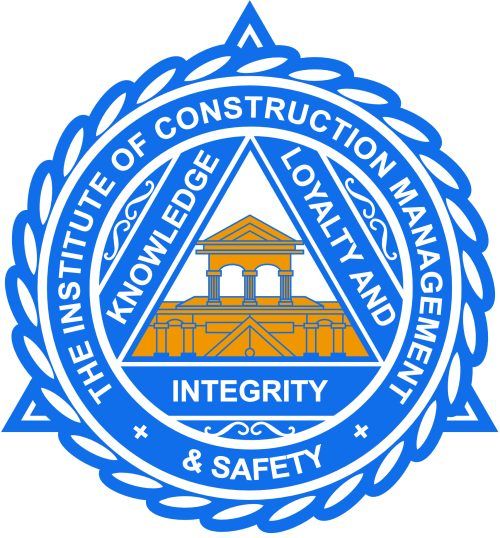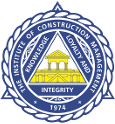
The Institute of Construction Management recently responded to the British Standards Institute BSI consultation of their proposed publicly accessible standard (PAS) for principal designer
The Institute of Construction Management recently responded to the British Standards Institute BSI consultation of their proposed publicly accessible standard (PAS) for principal designer.
This is the new role which will come in to effect under the Building Safety Bill, and is not to be confused with the already-existing role of principal designer under the CDM Regulations.
PAS 8671, which is aligned with the BSI Flex 8670, refers to the competency of persons either working individually or as part of an organization who are appointed as the principal designer for building safety purposes by the client. There will also be standards applicable to the competencies required for principal contractors, and the new role of building safety manager under the draft building safety regulations. The ICM is also consulting with the BSI on these additional standards, as well as working with government and other industry leaders on the building safety bill itself.
|
Page No. |
Ref / Para |
Comment |
|
6 |
1 |
0 Introduction The opening will likely confuse many readers with reference to "the new duty holder role of Principal Designer" because a statutory duty holder role with the same name exists and is appointed by the Client in accordance with the Construction (Design and Management) Regulations [CDM] To avoid the confusion the new statutory role should be given a distinctively separate name to better reflect the purpose of the role, its duty, and to give clarity of understanding to naive innocent persons (particularly residents and users). |
|
14 |
4 / 4 |
The reference to the list of fulfillment of the new statutory role in broad terms contains the terms "to manage, monitor and coordinate" the new Building Safety Bill [BSB] duties. The role naming confusion could be clarified by drawing upon the synergy between the new BSB and existing CDM. When CDM2007 was replaced by the CDM2015 re-enactment the previous statutory role of CDM Coordinator [CDM-C] was extinguished and all those duties became the responsibility of the Principal Designer to fulfill competently. In practical terms, many of the old CDM-Cs who were disenfranchised by the enactment of CDM2015 have continued to offer their services to the industry without any statutory remit simply contracted to Principal Designers who prefer to take on the statutory role in name only but sub-contract the duty to another who is often a rebranded CDM-C assisting and supporting the Principal Designer in an abrogated manner. If the new role was given clarity of a registered and protected title of a "Building Safety Management Coordinator" it would then be possible to provide clear post nominal to all those who need to be assured e.g. "BSM-C" Commissioning clients, lessee owners, users, and innocent residents would have clarity in the credentials of the professionals in whom they have to place trust and often their lives. |
|
22 |
Annex A |
A.1 Role definition From the informative text in this section, it makes the point and supports the ICM view that the dual use of the new duty holder role will confuse both the industry and the naive clients, owners, residents, and users of property The duties of the Principal Designer introduced by the BSB are distinct from those of the duty holder identified under CDM (CDM Principal Designer) for health and safety duties. The informative text attempts to make the point there are possibilities the same professional persons are likely to be offering both services -but- it is the view of ICM this has the potential to allow charlatans and incompetent professionals to operate in a confused market Although the same person is likely to undertake both roles. The Client may decide to appoint a Principal Designer for CDM, and a separate Principal Designer for building regulations duties. Although there is a caveat note added to explain the need for competence of those individuals who manage the statutory duty holder role when the new Principal Designer role is undertaken by an organisation, the ICM view is this must be robustly assured through licensed registration supported with regulated Continuing Profession Development and regular testing to ensure adequate SKE, attitude, and application NOTE Regardless, the individual in the role or the individual managing the functions on behalf of the organization will need to be competent for the work |
|
22 |
Annex A |
A.2 'new' BSM Principal Designer role’s functions and duties Where the consultation document states: The Principal Designer has several specific duties but the overall responsibility is to oversee the design work so that, if built, the building work to which the design relates would comply with relevant building regulations This appears to overlook the stated objectivity of the new Principal Designer role which is to have an overarching understanding of all aspects of building safety and to interrogate design, challenge bad practice, identify major hazards, and minimize safety risks to occupiers of the completed asset. It does seem obvious the duties of that new professional / organisation will need to extend beyond the pre-construction phase. [page 6 sect 0.3 refers] The ICM believes the ongoing evidence unfolding through the course of the lengthy and thorough judge led Inquiry into the tragic event of the Grenfell Tower fire has already provided strong indication of the consequences of following flawed principles that more often create separation and gaps in the information flows between the pre-construction stage of a project from its construction phase. The Grenfell Inquiry has heard just how unchecked and unsafe design changes were allowed to happen when safety and health is simply left to the construction phase team driven by contractual commercial objectivity and profit generation mainly operating without much monitoring, effective auditing, or lack of any independent Clerk of Works inspection / reporting regime. It is the ICM view that A.2 (a) should ensure the new Principal Designer duty and influence extends through the construction stage to ensure and monitor the project in order to prevent critical design changes being made by incompetent decisions and to ensure incompetent 'value engineered' design changes; substitution of specified products are not made without proper due authority and approval, and the construction phase is always independently monitored for compliance in all areas. |
|
6 |
0.2 |
The definition of “higher risk buildings” differs between the BSB and the Building Regulations. The regulations include hospitals etc whereas the BSB does not. Including them over time – through future variations of the BSB – will create a two-tier system of design safety provision and cause confusion and possible omissions in properly applying the regulations. |
|
6 |
0.3 |
The “Setting the Bar” report discussed harmonizing and standardizing competences for the UK’s built environment as a whole. The new standard only deals with those involved with HRBs as defined in the BSB. |
|
17 |
4.3.1 a |
Use of the general principles of prevention is fundamental to the role of the CDM principal designer, demonstrating even further that the PD roles and that of CDM PD are very closely related. |
|
18 |
4.4.2 |
Part 3 6. (7) (b) (i) of the Building (Appointment of Persons, Industry Competence and Dutyholders) Regulations states that where there are two or more designers but only one contractor, the designers must agree who will be “lead designer”. This term is used in conjunction with principal designer. Should this term not be included in the frames of reference for management competency by the principal designer? |
|
18 |
4.4.2 3 |
The PD is required to “create and maintain” the golden thread of information. The client appears to be exonerated from responsibility in establishing and maintaining this data. Is there to be a competency for clients? |
Ed.
BSB, BSI Flex 8670, building safety bill, cdm, CDM Competence, cdm2015, competence, compliance, construction, construction (design and management) regulations, construction management, PAS8671
